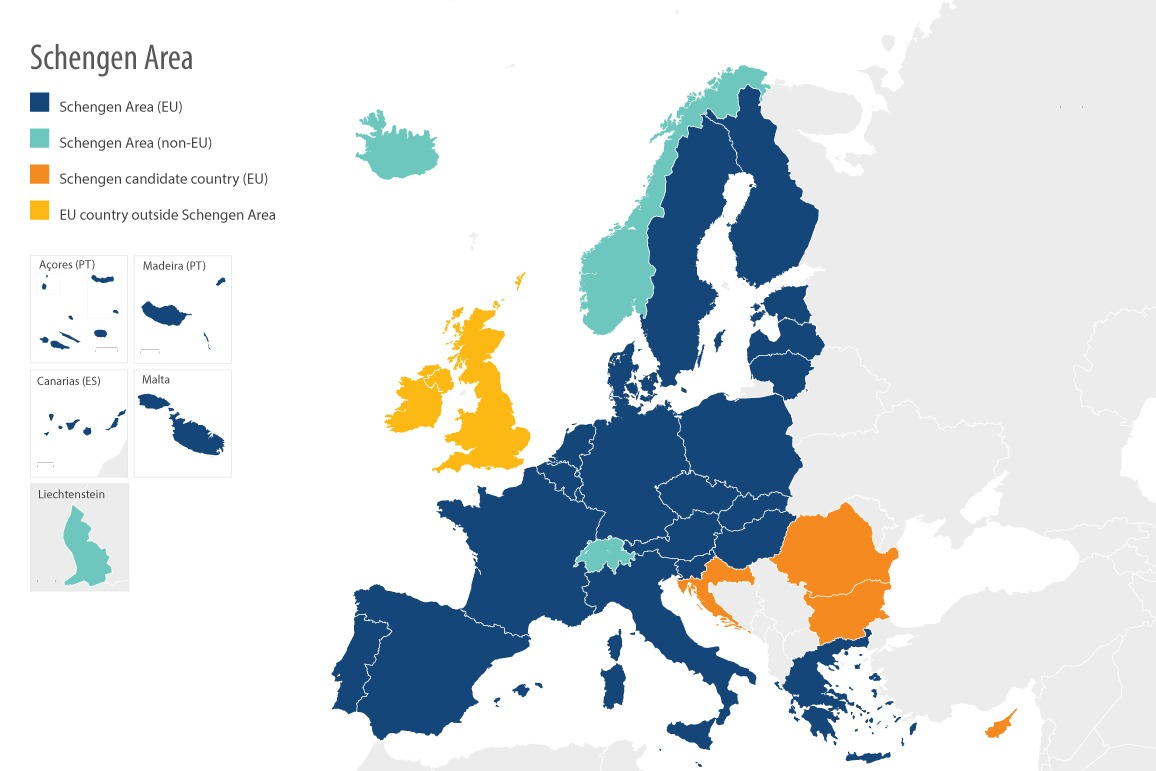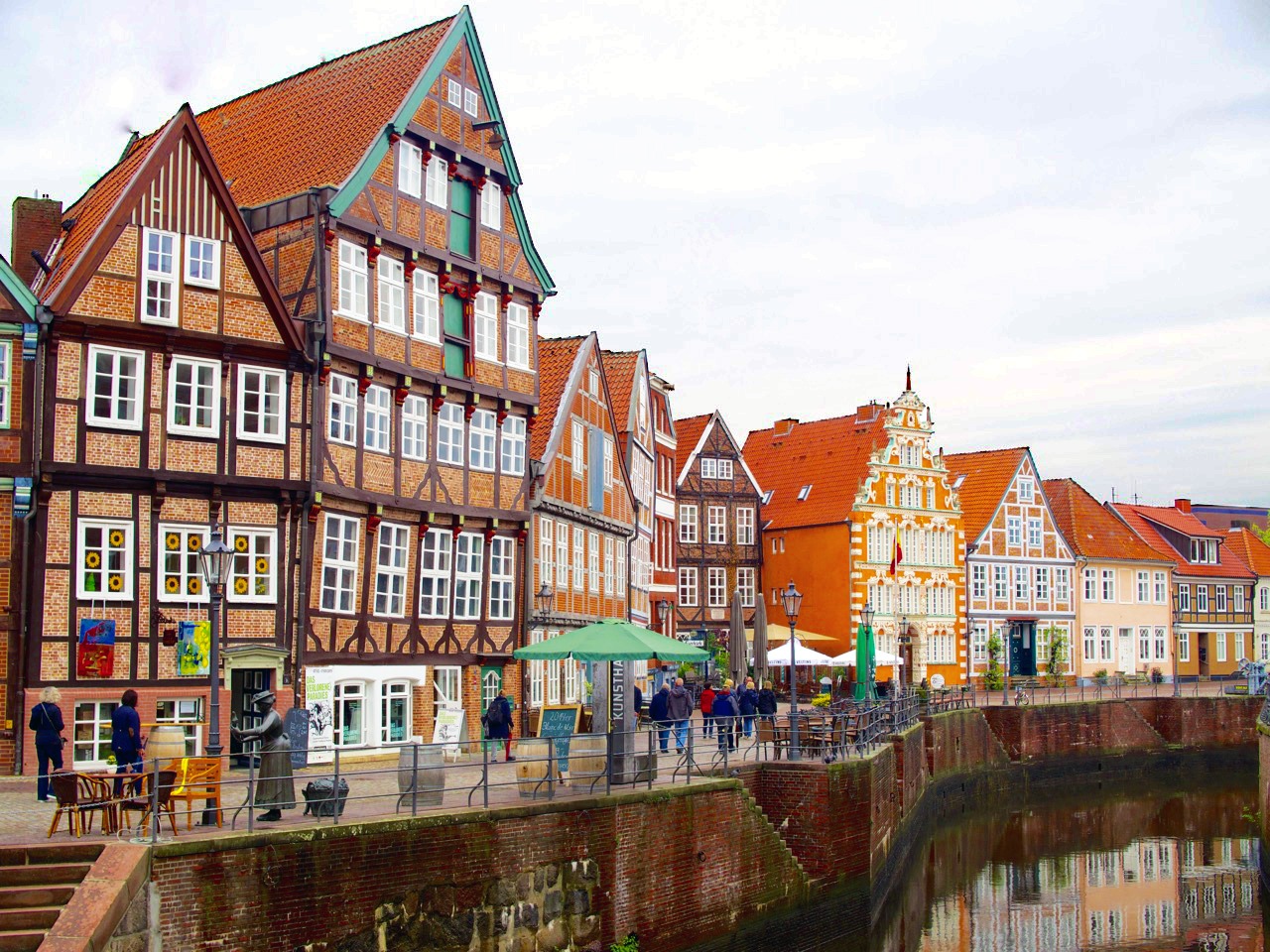How to stay in Europe without a visa (legally, of course)
So many of my friends and readers have asked me this question over the years: how have you managed to stay in Europe for so long? How hard is it to get a visa, or to travel from one country to another?
Jetting off to Europe, exploring every nook and corner of cities regularly pictured in romantic movies, sipping wine on a terrace while admiring the view of the medieval square. Yes, along-term vacation to Europe sounds quite dreamy, but there are a few rules to follow when it comes to staying in Europe legally and avoiding trouble at the border.
The post is mostly aimed at Canadians, Australians and Americans, as the visa policies are quite resembling when it comes to European territory.
Europe without a visa: understanding the Schengen Area
The most crucial notion to keep in mind when organizing a European vacation is the Schengen area.
It’s important to know that the European Union, the Euro Zone and the Schengen area, while similar in many ways, are quite different in reality.
The the two former items are economic and political areas, the latter, is geographical. The area currently covers a population of over 400 million people and an area of 4,312,099 square kilometres (in other words, enough to keep you busy for a little while!).

The Schengen area is comprised of 26 European countries that have abolished border control in-between their common border, functioning as a single country for international travel purposes, with a common visa policy.
The general rule is a maximum stay of 90 days within any 180-day period.
Consecutive stay
Allows for 90 consecutive days within the Schengen area, during which visitors are free to move around as much as they want so long as they leave immediately once their 90 days are up – at which point they will have to wait another consecutive 90-day period to re-enter the area.
Non-consecutive stay
Allows for 90 non-consecutive days within the Schengen area, during which visitors are free to enter and exit the area as much as they want so long as long as they don’t exceed a total of 90 days over a period of 180 days from the first date of entry. Visitors opting for this scenario will not have to wait to re-enter the zone once their initial 180-day period is up.
For these two scenarios, it is very important to understand that the clock doesn’t start back every time you re-enter the zone within that same 90-day period. It only starts back 180 days after your first entry.
Europe without a visa: playing by the rules
Getting a long-term visa in Europe
Despite being part of the same geographical area, not all countries have the same rules when it comes to long-term stays. Some countries simply don’t offer the option, while others require ludicrous amounts of redtape in exchange for a tiny stamp in your passport, which will allow you to stay for a specific amount of time and under specific conditions.
A few countries offer long-term visas (Italy, France, Sweden, for example) and other offer employment-specific visas (Germany has a self-employment/freelancing visa) that can apply to you.
Some even have mutual exchange programs that allow young citizens to live and work abroad for a definite amount of time (Sweden-Canada, France and French-speaking Canada, for example).
Ok, the UK isn’t technically part of the European Union anymore. Regardless, citizens of Canada, United States and Australia under the age of 30 are also eligible to working holidays visas in the United Kingdom (“Youth Mobility Scheme – Tier 5 Visa“) is what I did when I moved the UK for 10 months), which can be a fantastic and inexpensive way to legally spend a year or two in Europe, granted that you have substantial savings to prove that you can subsist on your own money and not public funding while you are there.
Details concerning these visas and the rules that apply to you can be found on your home country embassy’s website.
Exiting the Schengen Area while in Europe
It’s actually pretty easy to legally stay in Europe without a visa for more than the allotted 90 days. There are basically two scenarios possible: either get a long-term visa in one of the included European countries, or exit the Schengen area by visiting surrounding countries.
Each country has a different set of rules for visitors, but it would definitely be worth looking into including these countries to your European voyage in order to maximize your time on the continent.
If you are serious about “legally hacking” your stay in Europe, you should regularly check the status of countries that have either declined to be in or have yet to be implemented to the Schengen area, as the rules could change and therefore impact your itinerary.
Right now the main countries to follow-up on are Croatia, Bulgaria, and Romania.
Europe without a visa: good to know
- No visa is necessary to travel to the Schengen area for Canadians, Australians, and Americans for the regular 90-day stay.
- Visitors are not allowed to work or rely on public funding during that time.
- It is not possible to extend a Schengen area stay without an official visa.
- While I do not advocate going around the rules in any way, visitors should know that Northern countries are notoriously strict with entry and exit, while Southern countries tend to be less careful. Either way, it is unwise to overstay in the Schengen area, as you could end up with the “Illegal Immigrant” mention on your passport.
- The UK, Ireland, some of the Balkan countries, Russia, Turkey and Ukraine are not part of the Schengen area and may require a visa or, at the very least, border control. They are also great places to spend time in between 90-day stays in the Schengen area. Other non-European countries like Morocco, considering its geographical proximity, should also be considered.
- Southern Spain, Portugal, Poland, Ireland, the Balkans and Turkey are incredibly inexpensive places to live in, while France, Scandinavia, the UK and Germany tend to be a bit more costly.
Spending a lengthy amount of time in Europe is something many people only dream about, yet it’s surprisingly easy to accomplish with a little bit of research, organization and compromise. I always tell people that living abroad or going on an extended vacation is an incredible life experience that provides so much more than just pretty travel pictures.
DisclaimerI AM NOT AN IMMIGRATION ADVISOR. If you have specific questions regarding your immigration situation, please contact your embassy in the country you plan on visiting in Europe.Best of luck with your travels!







